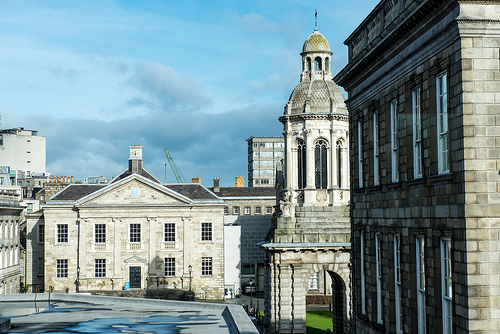Dónal Ring | Staff Writer
A prototype robot built by researchers and engineering students in Trinity College Dublin is due to be unveiled to the Secretary General of the International Telecommunications Union, the United Nation’s specialised agency for information and communication technologies, at 1pm today.
The robot, nicknamed “Robbie”, was built for Cork teenager Joanne O’Riordan, who is one of only nine people worldwide living with tetra-amelia, a condition in which the sufferer is born without arms or legs. In April 2012 O’Riordan addressed the UN at the ITU’s “Girls in Technology” conference and offered the challenge for someone to build her a robot.
Taking up this challenge is Assistant Professor Kevin Kelly, of Trinity’s School of Engineering, along with a team of young engineers.
According to Kelly, the prototype is a significant step in an ongoing process to deal with the issues faced by “people who, for various reasons, can’t currently do things that most of us take for granted.” The next problem is then “a matter of integrating other technologies and advancing the state of the art in other areas to take it to the next level”. However, he is optimistic about the future, telling The University Times that with enough time and resources, the project should reach the stage where the robot can assist people like Joanne with everyday household tasks.
The prototype is a humanoid robot, with features like a head, torso, legs, and arms, and when fully extended stands at 140cm. In order to communicate with people the head has a face on an LED screen, which can display emotions and blink. Instead of hands the machine has flexible grippers, which are balloons filled with coffee granules. Under normal circumstances the coffee particles behave like a liquid, but when the air is removed they jam into place and become rigid. By pressing the balloon against an object and creating a vacuum the robot can use this method to pick objects up, as it will conform to the object’s natural shape when soft and then harden around it.
Kelly felt compelled to meet O’Riordan’s challenge, calling her “inspirational”. He admired her speech on women in technology, saying it’s “something I feel strongly about”, and cited his interest in robotics, “in particular those working with and for people”, as a factor in his decision.
The robot prototype is due to be presented by Professor Kelly and his team to the ITU Secretary General, Dr Hamadoun Touré, who was behind the donation of €50,000 given for this project.
Photo by Gearoid Gibbs







